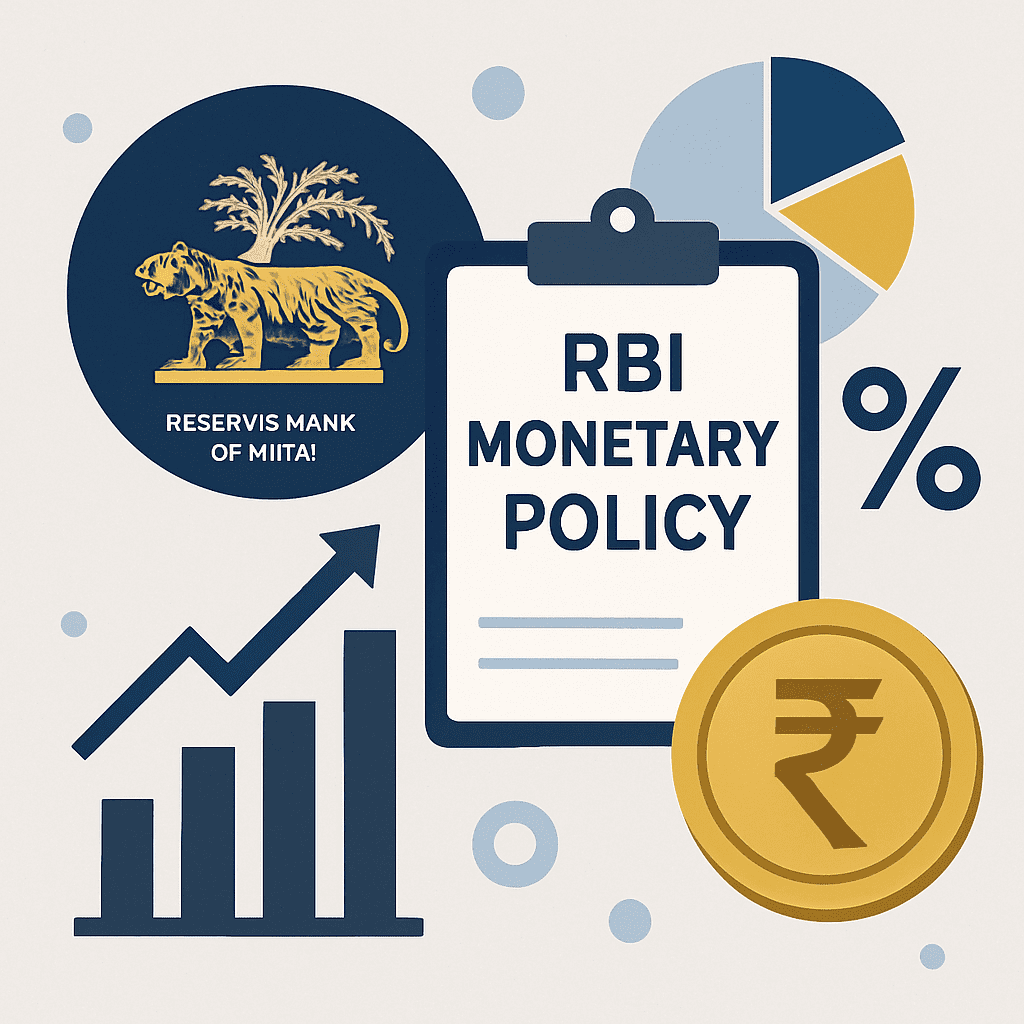RBI Monetary Policy: What You Need to Know

Explore the latest updates on RBI monetary policy, its impact on the economy, and strategies for effective financial management. Stay informed today!
Trending News Fox, Digital Desk Team, Kolkata
Edited by Saibal Bose
The Reserve Bank of India’s RBI monetary policy is the central bank’s strategy for managing the money supply and credit conditions to achieve macroeconomic goals. Its primary objective is to maintain price stability while keeping in mind the objective of growth. 📈
The policy is decided by the RBI Monetary Policy Committee (MPC), a six-member body headed by the RBI Governor. The MPC meets at least four times a year to assess the economic situation and decide on the policy stance.
Objectives of RBI Monetary Policy
The main goals of the RBI monetary policy are:
- Price Stability: This is the most crucial objective. The RBI aims to control inflation and keep it within a target range set by the government, which is currently 4%, with a tolerance band of +/- 2% (i.e., between 2% and 6%).
- Economic Growth: While controlling inflation, the RBI also ensures there’s enough credit available for productive sectors of the economy to grow. It’s a delicate balancing act between controlling inflation and promoting growth.
- Financial Stability: The policy aims to ensure the stability of the financial system by preventing excessive risk-taking by banks and other financial institutions.
- Regulation of Money Supply: The RBI manages the amount of money in circulation to match the economy’s demand, preventing situations of excess or scarcity of funds.
Key Tools of RBI Monetary Policy
The RBI uses several instruments to implement its monetary policy. These can be broadly classified into quantitative and qualitative tools.
Quantitative Tools
These tools influence the overall quantity of credit in the economy.
- Repo Rate: This is the rate at which the RBI lends money to commercial banks, typically against government securities. It’s the most powerful tool. When the RBI increases the repo rate, borrowing becomes more expensive for banks, which in turn leads to higher interest rates on loans for consumers and businesses. This reduces the money supply and helps curb inflation. A cut in the repo rate has the opposite effect, encouraging borrowing and growth. The current repo rate is 6.50% (as of August 2025).
- Reverse Repo Rate: This is the rate at which the RBI borrows money from commercial banks. It is used to absorb excess liquidity from the system. It is linked to the repo rate and is managed under the Liquidity Adjustment Facility (LAF).
- Cash Reserve Ratio (CRR): This is the percentage of a bank’s total deposits that it must maintain as cash reserves with the RBI. A higher CRR means banks have less money available to lend, which tightens credit in the economy.
- Statutory Liquidity Ratio (SLR): This is the percentage of a bank’s deposits that it must maintain in the form of liquid assets like cash, gold, or government-approved securities. A higher SLR restricts a bank’s lending capacity.
- Open Market Operations (OMOs): These involve the outright purchase or sale of government securities by the RBI in the open market to inject or absorb liquidity on a more permanent basis.
Qualitative Tools
These tools are used to regulate the flow of credit to specific sectors of the economy.
- Margin Requirements: The RBI can prescribe a margin, which is the proportion of the loan amount that a borrower has to finance on their own. Changing the margin requirement can encourage or discourage credit for specific purposes.
- Moral Suasion: This is an informal method where the RBI persuades or advises commercial banks to follow certain policies in the interest of the economy.
The RBI Monetary Policy Committee (MPC)
The decisions on key policy rates are taken by the six-member MPC.
- Composition: It consists of three members from the RBI (including the Governor, who is the chairperson) and three external members appointed by the Government of India.
- Decision Making: Each member has one vote, and in case of a tie, the Governor has a casting vote. The decision of the committee is binding on the RBI. This structure is meant to bring transparency and accountability to monetary policy decisions.
Frequently Asked Questions (FAQ)
Q1: How does the RBI monetary policy affect my home loan EMI?
When the RBI raises the repo rate, the cost of funds for your bank increases. The bank typically passes this on to you by increasing the interest rate on your home loan, which leads to a higher Equated Monthly Installment (EMI). Conversely, a repo rate cut can lead to lower EMIs.
Q2: What is a “hawkish” vs. “dovish” RBI monetary policy stance?
A hawkish stance indicates that the central bank’s priority is to control inflation, and it may be willing to raise interest rates to do so, even if it slows down economic growth. A dovish stance prioritizes growth and is more inclined towards cutting interest rates to stimulate the economy, even at the risk of higher inflation.
Q3: Why does the RBI focus so much on inflation?
High inflation erodes the purchasing power of money, hurts the poor the most, creates economic uncertainty, and can lead to instability. By keeping inflation in check, the RBI creates a stable environment for sustainable economic growth.
Q4: What is the RBI Monetary Policy Report (MPR)?
The RBI is mandated to publish a RBI Monetary Policy Report twice a year. This report explains the sources of inflation and provides the RBI’s forecast for inflation for the next 6 to 18 months.
Tags: RBI, Monetary Policy, India, Economy, Inflation, Repo Rate, CRR, SLR, MPC, Banking, Finance
Discover more from Trending News Fox
Subscribe to get the latest posts sent to your email.




